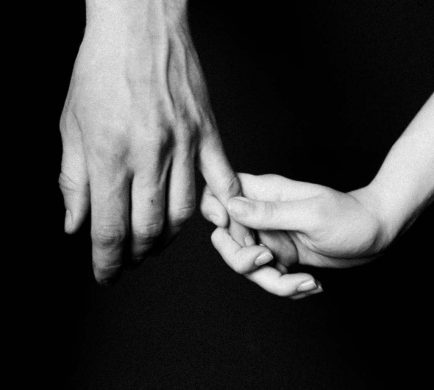Fairy tales contain every manner of bad behaviour, from malice and jealousy to deception and hatred. Because of this, they’re great tools for addressing some of our most deep-rooted issues. Fairy tales provide a safe place to explore our fears. In this chapter, we examine our darkest desires and come face to face with our phobias. Most importantly, we learn how to work with these and change the way we think and behave so that we can act in our own best interests, confident and empowered.
The Dark Side of Fairy Tales
Make no mistake. Fairy tales aren’t as twee as they first appear. The title may suggest that they’re going to be nice little stories with happy endings, but the reality is much darker. These tales deal with meaty issues. If you look back at the original versions, you’ll appreciate that they were written to be gritty and often disturbing. Although they’ve changed over the years and softened in some cases, there are still elements of those first tales lurking. Think for a minute about your favorite fairy tale. Is it all sweetness and light, or is there a twist? Does the protagonist get thrust into a challenge or have to escape from something or somewhere during the course of the tale? Consider Snow White, a beautiful princess envied so much by her stepmother that she tries to kill her. The queen’s insane obsession with her looks drives her to do the most despicable things, including trying to poison her stepdaughter and putting her into a coma. Or what about Rumpelstiltskin?
He might look sweet and quirky, but this sprightly character tries to cheat the queen out of her firstborn child. He has no qualms about manipulating the situation she finds herself in. In another example, the pied piper of Hamelin, who is known for his unique ability to catch rats, turns the tables on the townsfolk, stealing away all their children. Even the innocent tale of The Princess and the Pea has a darker side to it. The poor girl is tricked into spending a night in agony to prove that she’s a real princess. The queen will not take her word for it and wants the princess to prove her worth. But what would have happened if she had turned out simply to be a poor maiden lost in the storm? Would they have cast her out the next day or chopped off her head? We’ll never know, but the outcome could have been quite different.
The Forbidding Forest
One of the most common symbols in fairy tales is the dark, mysterious wood or enchanted forest, a place of deep foreboding and dread. Full of hidden dangers, it’s somewhere that you wouldn’t want to get lost in at any time of the day, but especially not at night. It’s also an archetype representing a forgotten part of ourselves, the darker part of our psyche that we’re scared to explore in case we discover something very traumatic. Fairy tales are forests of words. The deeper your read, the more you get lost in a magical world as the twists and turns of the story take you further into the heart of each adventure. It’s no surprise, then, that many of the characters find themselves lost and have to work their way through the enchanted woodland in search of something or looking for a way out. It’s also interesting that the forests in these tales are untamed, often forgotten places. Like the ancient forests of Britain, they seem to have slipped through time. Their nature points to the wildness within our own psyche and a need to face our deepest, darkest fears and desires.
In these tales, the forest has the power to change people, to help them find a new destiny. Like the characters in the stories, we’re urged to plunge into the forests of our mind and emerge the other side a little torn and disheveled but totally liberated by the experience. Consider the fate of Hansel and Gretel, who were dumped in the forest by their father and left to fend for themselves. Their greed almost leads to their downfall and a spell in the witch’s cooking pot, but they salvage the situation by facing up to the witch and giving her a taste of her own medicine. With their fear overcome, they’re no longer lost and can return home safe in the knowledge that they can deal with anything. They come out of the forest a little battle-weary but changed and strengthened from their ordeal.
In Sleeping Beauty, each prince who comes to the castle must fight his way to reach the princess through the vast and ancient forest that has grown up around the place. Many fail because they haven’t the courage to enter such a dark and wild place. But there is one who is not deterred. He breaks through the tumbling overgrowth and cuts away the thorny vines that block his path until he reaches the slumbering princess in the castle and awakens her with a kiss. Transformation is the key here. In addition, the forbidding undergrowth – an echo of the primeval forest – signifies the wild place within that we must all accept and embrace if we’re to find true peace in ourselves.
Walk on the Wild Side
The next time you take a walk in nature, whether it’s through the woods or an area of greenery in the city, use all your senses to experience the world around you. Think about how the environment looks and notice every detail. Consider the scents of the flowers and the different textures and shades of the foliage.
Notice the wind upon your face. Feel what it’s like to walk barefoot on the earth or the grass. Place your hands on the bark of a tree. Breathe deeply and let any thoughts or emotions gently pass through your mind. Also, listen to the sounds of the forest. This is Mother Nature’s soundtrack and part of the beguiling magic of the world we live in. Get lost in the music of your surroundings and let it enhance the experience. If you can’t get out and about, imagine you’re entering a forest in your mind by visualizing a picture in front of you. See the picture increase in size and then step into it. Be bold like a character from a fairy tale and plunge deeper into the forest. Use all your senses to get the most from experience. If you feel brave, ask the forest to introduce you to something about yourself that you weren’t aware of. For example, you might encounter another creature, real or mythical. What does it say about you? How do you react to it? How does it make you feel?
Take your time and let the scene unfold. This is your forest, so you’re perfectly safe and in control, even if you feel a little scared. Anything you experience comes from a place of learning. When you’re ready, picture yourself emerging from the other side of the forest. See yourself walking toward the light and feel the warmth of the sun on your face. Afterward, make a note of your thoughts and feelings. Include any images or symbols that have stayed in your mind, as these could be key to unlocking your fears and desires.
TOP TIPS TO RECONNECT WITH NATURE
- Spend at least an hour every week walking in woodland (even cities have forested areas), and imagine you’re in your own fairy-tale setting.
- Get outside in the garden and get your hands dirty in the soil. If you don’t have a garden, invest in an allotment and grow some vegetables, or simply plant some seeds in a pot on the windowsill.
- Have a go at capturing nature on canvas by painting with watercolors.
- Let the landscape inspire you to write some poetry.
- Stand barefoot on the grass in your garden or a local park and feel the energy of the earth beneath your feet.
- Sit beneath a tree with your back against its bark and let the trunk support you.
- Volunteer with nature-conservation groups.
- Go cross-country running.
- Visit country parks and go for rambles.
Camp in the great outdoors.
The Forest of Phobias
If you have a specific phobia, you can use the enchanted forest to help you overcome it.
Visualize being in the heart of the forest. You feel comfortable and secure as you sit with your back against a giant oak tree. You know you’re supported in all you do and connected to the earth. Now imagine facing your phobia. For example, if you’re scared of spiders, you suddenly see one coming toward you. But because this is a magical place and this is your fairy tale, you can change the rules. So instead of the spider scaring you, it stops, bows, and says hello! Imagine striking up a conversation with the spider and telling it why you usually feel so scared of spiders. Then, visualize what the friendly spider would say to you in return. If your phobia is about being confined in small spaces, see yourself falling back until you’re inside the tree trunk. At first, this feels like a small space, but as you breathe calmly, you notice it’s actually much bigger than you thought. Picture yourself expanding your aura – the energy field around your body – so that it grows outward, making the space bigger and bigger until you are comfortable within it. Be creative. Whatever phobia you have, you can play around with it in your story. Remember, you’re perfectly safe and in control. When you’re ready, emerge from the forest into the light and feel a sense of renewed strength and optimism. By repeating this visualization often, you’ll start to take the fear away from your phobia. It will no longer be a scary shadow lurking in the background because you’re dealing with it head-on and making its circumstances more acceptable. You’ll start to feel more comfortable about it and may even find it fading away.
By Alison Davies







